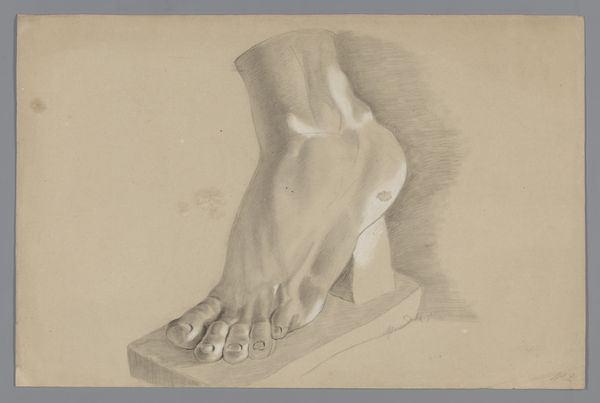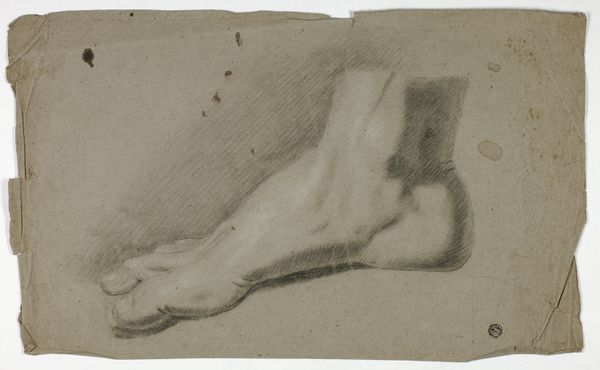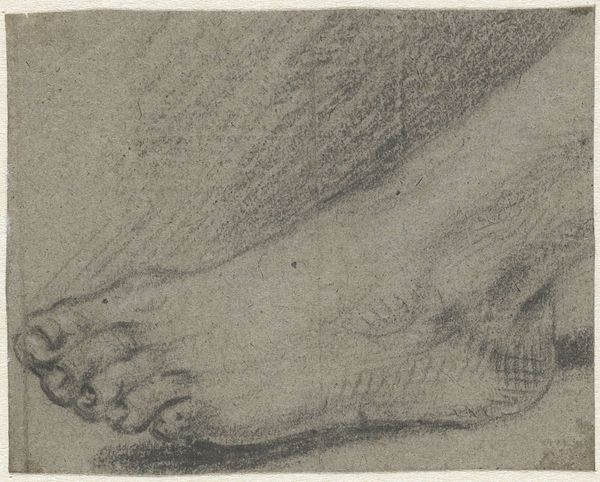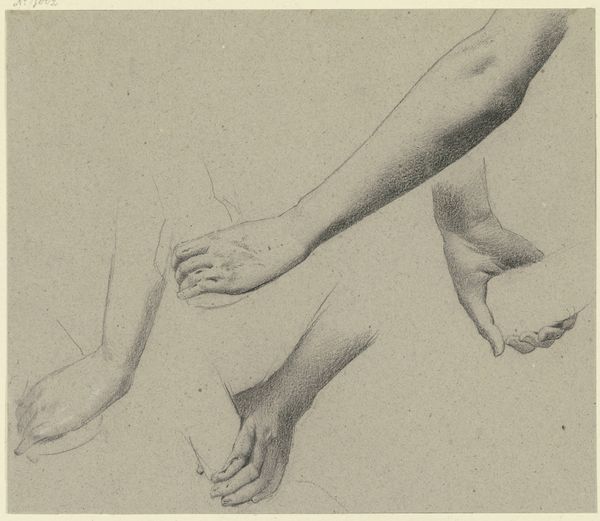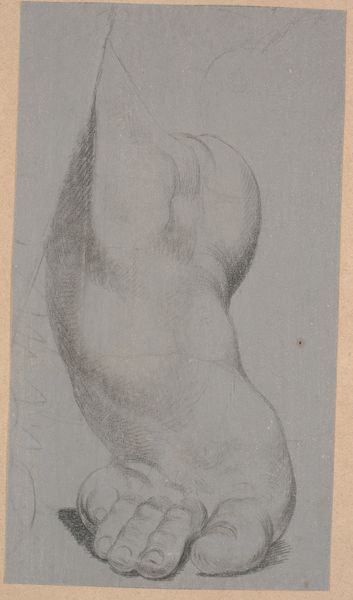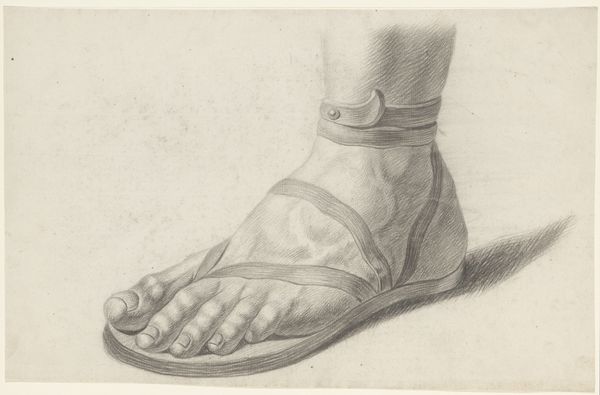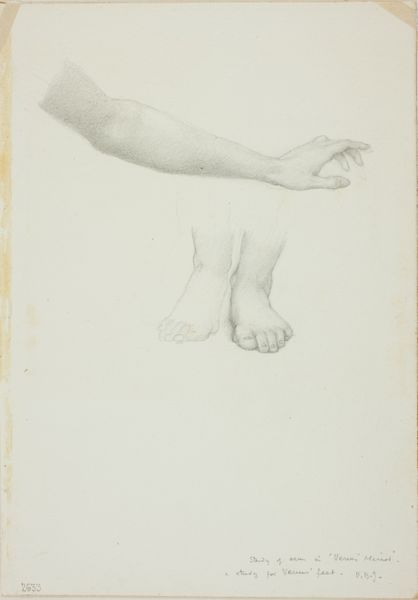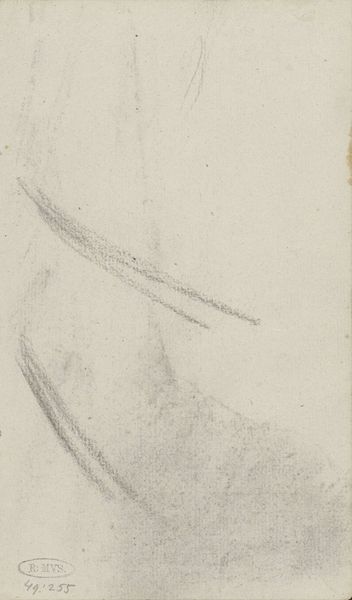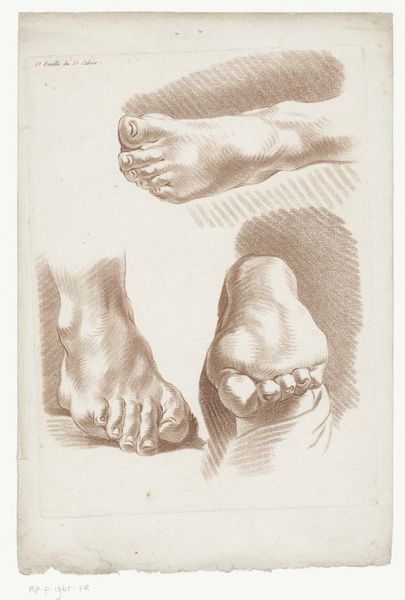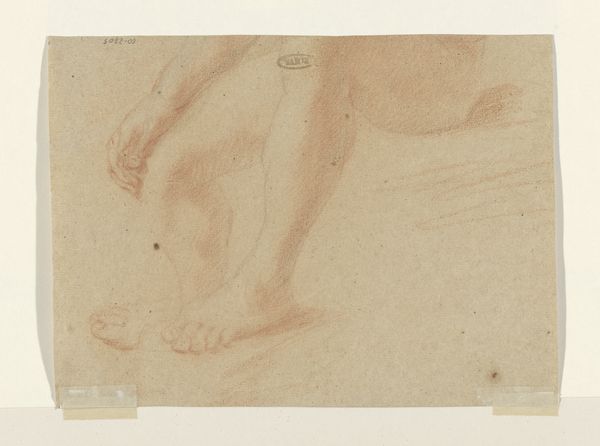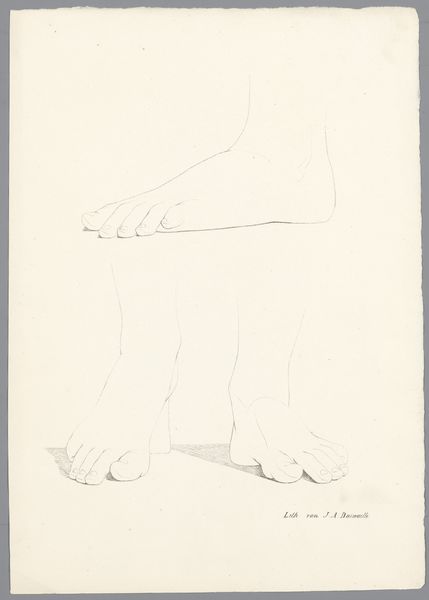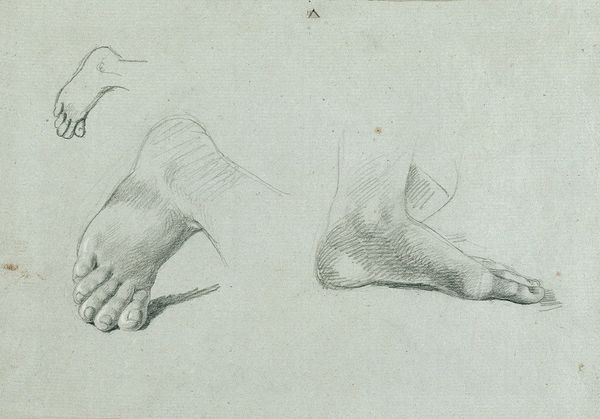
drawing, paper, pencil
#
drawing
#
classical-realism
#
figuration
#
paper
#
pencil
#
academic-art
#
realism
Dimensions: height 315 mm, width 480 mm
Copyright: Rijks Museum: Open Domain
Here we see a drawing of a plaster cast of a foot by Alexander Cranendoncq, made in the nineteenth century. The foot, often overlooked, bears a rich symbolic weight throughout art history. Consider the "foot washing" motif from religious art, or the numerous statues with missing or broken feet in classical sculpture. What does it mean when the foot is separated from the body? In what other ways has this symbol appeared across time? The image of the foot, severed, can be a potent symbol of vulnerability. Yet, it can also be understood as a symbol of connection, as feet are our point of contact with the earth. They carry us through life, grounding us in the physical world. Consider, for instance, the symbolic role of bare feet in religious contexts, particularly in depictions of the crucifixion, where the feet are often pierced, symbolizing sacrifice and humility. The humble foot embodies both frailty and strength; the human condition itself, always in motion, always vulnerable.
Comments
No comments
Be the first to comment and join the conversation on the ultimate creative platform.
